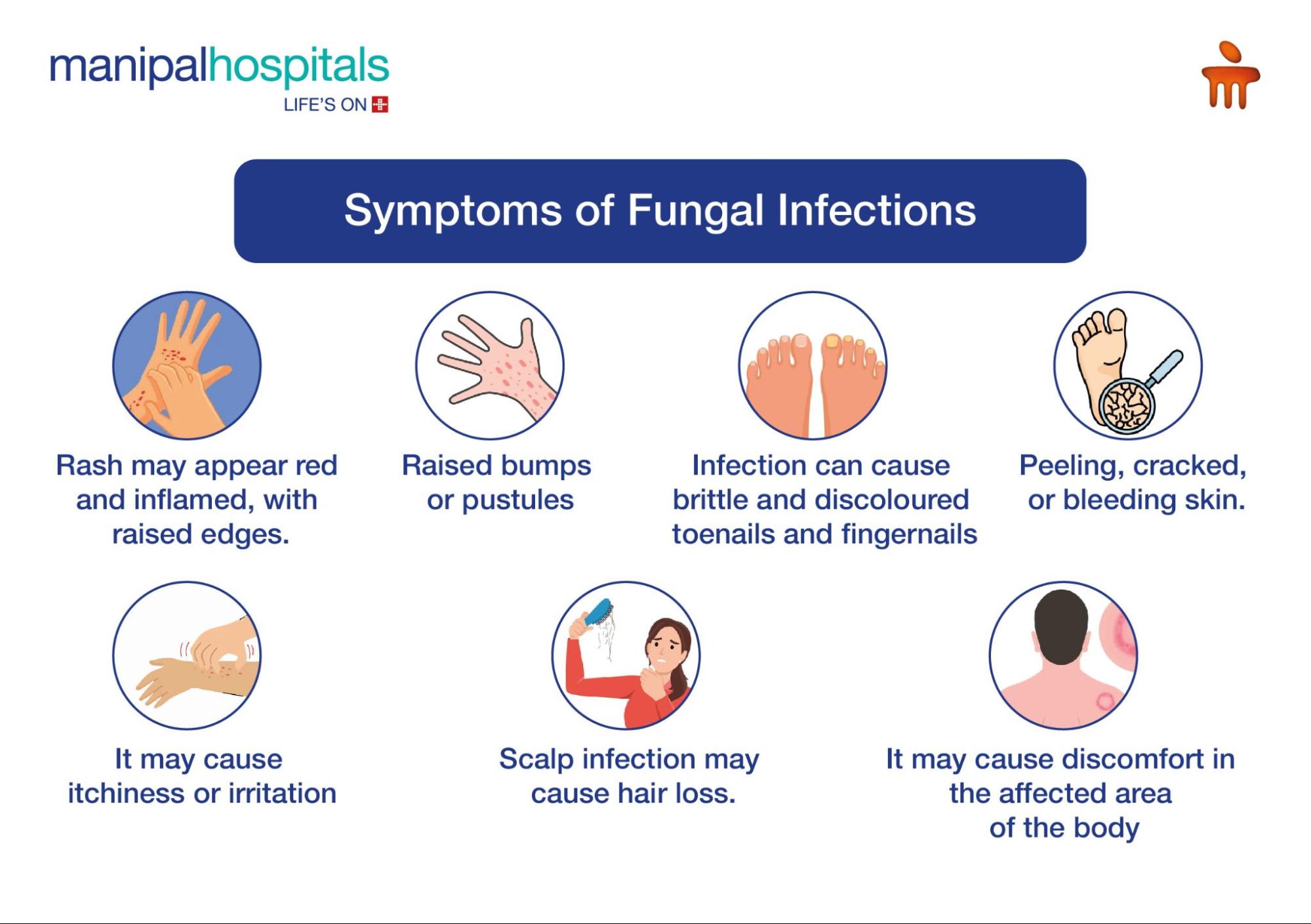Many health conditions, including fungal infections on the skin, are common in young children, but they can cause concern for caregivers and parents. These infections can present as small illnesses or develop into serious infections at any moment, causing considerable discomfort to both the child and the parents. Fungal infections of the skin and nails affect 20 to 25% of the world population. Among them, children are disproportionately affected due to overcrowding, poor hygiene, and socioeconomic status.
This blog post summarises the symptoms, causes, and fungal infection treatment in children.
Synopsis
Understanding Fungal Infections
Fungi live in warm, damp and humid parts of a child's body, most often in the groin, between toes and in the diaper area. Infections or diseases caused by the fungi are due to an upset of the balances that keep the fungi in check. Some fungal infections produce just a little discomfort, whilst others penetrate deeper and might cause itching, swelling, blistering, or scaling. Consequently, clinical treatment from a healthcare expert is frequently required.
Common Fungal Infections in Children
Children are prone to several fungal infections, especially on the skin, due to their active lifestyle and developing immunity. Although usually mild, these infections can cause significant discomfort if left untreated.
Ringworm (Tinea)
One of the most common fungal infections on the skin, ringworm, appears as red, circular, and itchy patches with raised edges. It can affect the scalp (tinea capitis), body (tinea corporis), groin (tinea cruris or jock itch), and feet (tinea pedis). It is highly contagious and often spreads through skin contact or shared items.
Fungal Nail Infection (Onychomycosis)
Fungal nail infections are less prevalent in children, although they can happen, especially in those who sweat regularly. Nails may become thick, discoloured, or brittle.
Yeast Infections (Candidiasis)
Candida can cause oral thrush or a diaper rash.
-
Oral thrush: It manifests in the form of white patches inside the baby’s mouth, especially in the tongue, gums, and inner cheeks. The oral thrush causes discomfort for the baby when feeding, leading to fussiness and irritability.
-
Diaper rash: The rash caused by the diaper is widespread and appears bright red and inflamed. It develops due to constant exposure to urine and faeces and may alter the skin’s pH, becoming the breeding ground for fungi to grow.
Recognising them early will help guarantee quick and efficient fungal infection treatment.
Symptoms of Fungal Infections

Here are a few symptoms of fungal infections:
-
The rash may appear red and inflamed, with raised edges
-
Raised bumps or pustules
-
Infection can cause brittle and discoloured toenails and fingernails
-
Peeling, cracked, or bleeding skin
-
It may cause itchiness or irritation
-
Scalp infection may cause hair loss
-
It may cause discomfort in the affected area of the body
Causes for Fungal Infections
Several factors contribute to the occurrence of fungal infections in children.
-
Weak or Immature Immune System
Young children have developing immune systems, making them more susceptible to diseases caused by fungi, especially if they are already ill or taking antibiotics.
-
Contact with Infected Individuals or Surfaces
Fungal spores spread through direct skin contact or by touching contaminated objects like towels, clothes, or playground equipment. For instance, highly virulent ringworm forms can spread from affected persons or animals.
-
Warm, Humid Conditions
Sweaty feet, damp clothes, and warm weather contribute to fungal skin diseases, particularly in children who are constantly moving and playing. Most children tend to develop jock itch or diaper rash due to moisture and perspiration in the groin area.
-
Poor Hygiene
Infrequent bathing, poorly washed clothing, not changing diapers often, or keeping the fungi-prone areas moist can create an ideal environment for fungi to thrive.
-
Health Conditions
Although rare, children with medical conditions such as poor circulation, diabetes, or those infected with the human immunodeficiency virus (HIV) are increasingly prone to develop fungal infections.
Fungal Infection Treatment
Treatment of fungal infections on the skin in children varies depending on the kind and severity. Ringworm is typically managed with topical antifungal creams like clotrimazole or terbinafine, while more stubborn cases may require oral antifungals such as fluconazole. Oral thrush is treated with nystatin or fluconazole suspensions, alongside good oral hygiene. Jock itch responds well to topical creams containing miconazole or clotrimazole, and keeping the area dry is essential—using talcum powder may help reduce moisture.
For diaper rash caused by fungi, frequent diaper changes and antifungal creams are recommended, along with diaper-free time to let the skin breathe. Fungal nail infections are treated with topical antifungals, but if they do not respond to treatment, then oral antifungal medications are prescribed.
Good hygiene and keeping the child’s skin dry are key to preventing fungal infections. Also, avoid sharing personal items, sterilise baby bottles and pacifiers regularly, maintain dry, clean clothing, and change diapers frequently. If your child has recurring or spreading infections, severe discomfort, or no improvement with treatment, consult a paediatrician for appropriate care.
Conclusion
Fungal infections in young children are quite common due to their developing immune systems. By following simple preventive measures and recognising the symptoms and treating them early, the child can avoid any discomfort or distress. For more information on fungal infection in children, consult Manipal Hospitals, Mukundapur, today!
FAQ's
A contagious fungal infection among children affecting the scalp and hair. The condition is common in children between the ages of 2 to 10 years. Affected individuals experience localised areas of hair loss and itchy and red scaly rashes on the scalp. If not treated early, it could lead to permanent hair loss.
Fungal infections that develop on the skin and nails usually aren't serious. However, children with weakened immune systems have a higher risk of developing serious illness with some fungal infections.
A medical specialist will be able to diagnose a tinea infection. They may use a special light called a Wood’s lamp to identify the fluorescence of the infection. A sample of the skin scraping or pulled hair will be sent for a fungal culture test to confirm the diagnosis.
Children may be at risk of contracting ringworm if they:
-
Use shared bathrooms or locker rooms
-
Live in a warm climate
-
Play contact sports
-
Are in touch with children or dogs that have ringworm
-
Have poor hygiene
-
Children with weakened immune systems
-
Are malnourished
The best way to prevent jock itch is to promote hygiene, keep the genital area as clean as possible, and avoid sharing personal items to lower the incidence of infection.





















 6 Min Read
6 Min Read


















